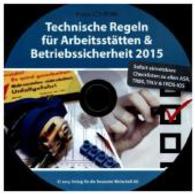- ホーム
- > 洋書
- > 英文書
- > Computer / General
Full Description
Learn, prepare, and practice for CompTIA Network+ N10-005 exam success with this CompTIA Authorized Cert Guide from Pearson IT Certification, a leader in IT Certification learning and a CompTIA Authorized Platinum Partner. * Master Network+ exam topics * Assess your knowledge with chapter-ending quizzes * Review key concepts with exam preparation tasks * Practice with realistic exam questions on the DVD Limited Time Offer: Buy CompTIA Network+ N10-005 Authorized Cert Guide and receive a 10% off discount code for the CompTIA Network+ N10-005 exam. To receive your 10% off discount code: 1. Register your product at pearsonITcertification.com/register 2. Follow the instructions 3. Go to your Account page and click on "Access Bonus Content" CompTIA Network+ N10-005 Authorized Cert Guide is a best-of-breed exam study guide. Best-selling author and expert instructor Kevin Wallace shares preparation hints and test-taking tips, helping you identify areas of weakness and improve both your conceptual knowledge and hands-on skills. Material is presented in a concise manner, focusing on increasing your understanding and retention of exam topics.The book presents you with an organized test preparation routine through the use of proven series elements and techniques. Exam topic lists make referencing easy. Chapter-ending Exam Preparation Tasks help you drill on key concepts you must know thoroughly. Review questions help you assess your knowledge, and a final preparation chapter guides you through tools and resources to help you craft your final study plan. The companion DVD contains the powerful Pearson IT Certification Practice Test engine, complete with hundreds of exam-realistic questions. The assessment engine offers you a wealth of customization options and reporting features, laying out a complete assessment of your knowledge to help you focus your study where it is needed most. The DVD also contains more than two hours of personal video mentoring from the author. Well-regarded for its level of detail, assessment features, and challenging review questions and exercises, this authorized study guide helps you master the concepts and techniques that will enable you to succeed on the exam the first time.The authorized study guide helps you master all the topics on the Network+ exam, including: * Computer networks and the OSI model * Network components * Ethernet * IP addressing * Routing traffic * Wide Area Networks (WANs) * Wireless LANs * Network performance * Command-line utilities * Network management * Network security * Troubleshooting Kevin Wallace, CCIE No. 7945, is one of the most prolific and best-selling authors in the networking industry. He is a certified Cisco instructor, and he holds multiple certifications including CCNP, CCNP Voice, CCNP Security, and CCDP, in addition to multiple security and voice specializations. With networking experience dating back to 1989 (and computer experience dating back to 1982), Kevin is a Senior Technical Instructor for SkillSoft. Kevin has been a network design specialist for the Walt Disney World Resort and a network manager for Eastern Kentucky University. Companion DVD The DVD contains two free, complete practice exams and more than two hours of video training.Includes Exclusive Offer for 70% Off Premium Edition eBook and Practice Test Pearson IT Certification Practice Test minimum system requirements: Windows XP (SP3), Windows Vista (SP2), or Windows 7; Microsoft .NET Framework 4.0 Client; Pentium class 1GHz processor (or equivalent); 512 MB RAM; 650 MB disc space plus 50 MB for each downloaded practice exam Shelving Category: CompTIA Certification Covers: Network+ N10-005
Contents
Introduction xxvi Chapter 1 Introducing Computer Networks 3 Foundation Topics 4 Defining a Network 4 The Purpose of Networks 4 Overview of Network Components 5 Networks Defined by Geography 7 LAN 7 WAN 8 Other Categories of Networks 9 CAN 9 MAN 9 PAN 9 Networks Defined by Topology 9 Physical Versus Logical Topology 10 Bus Topology 11 Ring Topology 13 Star Topology 15 Hub-and-Spoke Topology 16 Full-Mesh Topology 18 Partial-Mesh Topology 19 Networks Defined by Resource Location 20 Client-Server Networks 20 Peer-to-Peer Networks 22 Summary 24 Exam Preparation Tasks 25 Review All the Key Topics 25 Complete Tables and Lists from Memory 25 Define Key Terms 25 Review Questions 26 Chapter 2 Dissecting the OSI Model 29 Foundation Topics 30 The Purpose of Reference Models 30 The OSI Model 31 Layer 1: The Physical Layer 33 Layer 2: The Data Link Layer 36 Media Access Control 37 Logical Link Control 37 Layer 3: The Network Layer 39 Layer 4: The Transport Layer 42 Layer 5: The Session Layer 44 Layer 6: The Presentation Layer 45 Layer 7: The Application Layer 46 The TCP/IP Stack 47 Layers of the TCP/IP Stack 47 Common Application Protocols in the TCP/IP Stack 51 Summary 53 Exam Preparation Tasks 54 Review All the Key Topics 54 Complete Tables and Lists from Memory 54 Define Key Terms 55 Review Questions 55 Chapter 3 Identifying Network Components 59 Foundation Topics 60 Media 60 Coaxial Cable 60 Twisted-Pair Cable 62 Shielded Twisted Pair 62 Unshielded Twisted Pair 63 Plenum Versus Non-Plenum Cable 66 Fiber-Optic Cable 66 Multimode Fiber 67 Single-Mode Fiber 68 Cable Distribution 70 Wireless Technologies 73 Network Infrastructure Devices 74 Hubs 74 Bridges 75 Switches 77 Multilayer Switches 83 Routers 84 Infrastructure Device Summary 85 Specialized Network Devices 86 VPN Concentrators 86 Firewalls 87 DNS Servers 88 DHCP Servers 90 Proxy Servers 92 Content Engines 93 Content Switches 94 Virtual Network Devices 95 Virtual Servers 95 Virtual Switches 96 Virtual Desktops 97 Other Virtualization Solutions 98 Voice over IP Protocols and Components 99 Summary 101 Exam Preparation Tasks 102 Review All the Key Topics 102 Complete Tables and Lists from Memory 103 Define Key Terms 103 Review Questions 104 Chapter 4 Understanding Ethernet 107 Foundation Topics 108 Principles of Ethernet 108 Ethernet Origins 108 Carrier Sense Multiple Access Collision Detect 110 Distance and Speed Limitations 113 Ethernet Switch Features 116 Virtual LANs 116 Trunks 118 Spanning Tree Protocol 119 Corruption of a Switch's MAC Address Table 119 Broadcast Storms 120 STP Operation 122 Link Aggregation 124 Power over Ethernet 126 Port Monitoring 127 User Authentication 129 First-Hop Redundancy 130 Other Switch Features 131 Summary 132 Exam Preparation Tasks 133 Review All the Key Topics 133 Complete Tables and Lists from Memory 133 Define Key Terms 134 Review Questions 134 Chapter 5 Working with IP Addresses 139 Foundation Topics 140 Binary Numbering 140 Principles of Binary Numbering 140 Converting a Binary Number to a Decimal Number 141 Converting a Decimal Number to a Binary Number 141 Binary Numbering Practice 143 Binary Conversion Exercise #1 143 Binary Conversion Exercise #1: Solution 144 Binary Conversion Exercise #2 144 Binary Conversion Exercise #2: Solution 144 Binary Conversion Exercise #3 145 Binary Conversion Exercise #3: Solution 145 Binary Conversion Exercise #4 146 Binary Conversion Exercise #4: Solution 146 IPv4 Addressing 147 IPv4 Address Structure 147 Classes of Addresses 149 Types of Addresses 151 Unicast 151 Broadcast 152 Multicast 152 Assigning IPv4 Addresses 153 IP Addressing Components 154 Static Configuration 154 Dynamic Configuration 159 BOOTP 159 DHCP 160 Automatic Private IP Addressing 161 Subnetting 162 Purpose of Subnetting 162 Subnet Mask Notation 163 Subnet Notation: Practice Exercise #1 165 Subnet Notation: Practice Exercise #1 Solution 165 Subnet Notation: Practice Exercise #2 165 Subnet Notation: Practice Exercise #2 Solution 165 Extending a Classful Mask 166 Borrowed Bits 166 Calculating the Number of Created Subnets 166 Calculating the Number of Available Hosts 167 Basic Subnetting Practice: Exercise #1 167 Basic Subnetting Practice: Exercise #1 Solution 168 Basic Subnetting Practice: Exercise #2 169 Basic Subnetting Practice: Exercise #2 Solution 169 Calculating New IP Address Ranges 170 Advanced Subnetting Practice: Exercise #1 172 Advanced Subnetting Practice: Exercise #1 Solution 172 Advanced Subnetting Practice: Exercise #2 173 Advanced Subnetting Practice: Exercise #2 Solution 174 Additional Practice 176 Classless Inter-Domain Routing 177 IP Version 6 178 Need for IPv6 178 IPv6 Address Structure 178 IPv6 Data Flows 179 Unicast 179 Multicast 180 Anycast 181 Summary 182 Exam Preparation Tasks 183 Review All the Key Topics 183 Complete Tables and Lists from Memory 184 Define Key Terms 184 Review Questions 184 Chapter 6 Routing Traffic 189 Foundation Topics 190 Basic Routing Processes 190 Sources of Routing Information 193 Directly Connected Routes 193 Static Routes 194 Dynamic Routing Protocols 195 Routing Protocol Characteristics 197 Believability of a Route 198 Metrics 198 Interior Versus Exterior Gateway Protocols 199 Route Advertisement Method 200 Distance Vector 200 Link State 202 Routing Protocol Examples 202 Address Translation 204 NAT 204 PAT 206 Multicast Routing 208 IGMP 208 PIM 210 PIM-DM 211 PIM-SM 213 Summary 215 Exam Preparation Tasks 216 Review All the Key Topics 216 Complete Tables and Lists from Memory 216 Define Key Terms 216 Review Questions 217 Chapter 7 Introducing Wide-Area Networks 221 Foundation Topics 222 WAN Properties 222 WAN Connection Types 222 WAN Data Rates 224 WAN Media Types 225 Physical Media 225 Wireless Media 226 WAN Technologies 227 Dedicated Leased Line 228 T1 228 E1 229 T3 229 E3 229 CSU/DSU 230 Point-to-Point Protocol 230 Digital Subscriber Line 234 Cable Modem 236 Synchronous Optical Network 237 Satellite 239 Plain Old Telephone Service 241 Integrated Services Digital Network 243 Frame Relay 245 Asynchronous Transfer Mode 246 Multiprotocol Label Switching 249 Summary 250 Exam Preparation Tasks 251 Review All the Key Topics 251 Complete Tables and Lists from Memory 251 Define Key Terms 252 Review Questions 252 Chapter 8 Connecting Wirelessly 257 Foundation Topics 258 Introducing Wireless LANs 258 WLAN Concepts and Components 258 Wireless Routers 258 Wireless Access Point 259 Antennas 260 Frequencies and Channels 262 CSMA/CA 265 Transmission Methods 265 WLAN Standards 266 802.11a 266 802.11b 267 802.11g 267 802.11n 267 Deploying Wireless LANs 268 Types of WLANs 268 IBSS 269 BSS 269 ESS 270 Sources of Interference 271 Wireless AP Placement 272 Securing Wireless LANs 273 Security Issues 273 Approaches to WLAN Security 275 Security Standards 277 WEP 277 WPA 278 WPA2 278 Summary 278 Exam Preparation Tasks 279 Review All the Key Topics 279 Complete Tables and Lists from Memory 280 Define Key Terms 280 Review Questions 280 Chapter 9 Optimizing Network Performance 285 Foundation Topics 286 High Availability 286 High-Availability Measurement 286 Fault-Tolerant Network Design 286 Hardware Redundancy 288 Layer 3 Redundancy 288 Design Considerations for High-Availability Networks 290 High-Availability Best Practices 290 Content Caching 291 Load Balancing 291 QoS Technologies 292 Introduction to QoS 292 QoS Configuration Steps 294 QoS Components 295 QoS Mechanisms 296 Classification 296 Marking 297 Congestion Management 298 Congestion Avoidance 298 Policing and Shaping 299 Link Efficiency 301 Case Study: SOHO Network Design 302 Case Study Scenario 302 Suggested Solution 304 IP Addressing 304 Layer 1 Media 305 Layer 2 Devices 306 Layer 3 Devices 307 Wireless Design 307 Environmental Factors 308 Cost Savings Versus Performance 308 Topology 309 Summary 309 Exam Preparation Tasks 310 Review All the Key Topics 310 Complete Tables and Lists from Memory 310 Define Key Terms 311 Review Questions 311 Chapter 10 Using Command-Line Utilities 315 Foundation Topics 316 Windows Commands 316 arp 316 ipconfig 318 nbtstat 321 netstat 324 nslookup 326 ping 328 route 330 tracert 334 UNIX Commands 336 arp 337 dig and nslookup 340 host 341 ifconfig 341 traceroute 342 netstat 343 ping 345 Summary 348 Exam Preparation Tasks 349 Review All the Key Topics 349 Complete Tables and Lists from Memory 350 Define Key Terms 350 Review Questions 350 Chapter 11 Managing a Network 357 Foundation Topics 358 Maintenance Tools 358 Bit-Error Rate Tester 358 Butt Set 359 Cable Certifier 359 Cable Tester 360 Connectivity Software 360 Crimper 360 Electrostatic Discharge Wrist Strap 361 Environmental Monitor 362 Loopback Plug 362 Multimeter 363 Protocol Analyzer 364 Punch-Down Tool 365 Throughput Tester 365 Time Domain Reflectometer/Optical Time Domain Reflectometer 366 Toner Probe 366 Configuration Management 367 Monitoring Resources and Reports 369 SNMP 369 Syslog 373 Logs 375 Application Logs 376 Security Logs 376 System Logs 377 Summary 378 Exam Preparation Tasks 379 Review All the Key Topics 379 Complete Tables and Lists from Memory 379 Define Key Terms 380 Review Questions 380 Chapter 12 Securing a Network 385 Foundation Topics 386 Security Fundamentals 386 Network Security Goals 386 Confidentiality 386 Integrity 390 Availability 391 Categories of Network Attacks 391 Confidentiality Attacks 391 Integrity Attacks 394 Availability Attacks 397 Defending Against Attacks 402 User Training 402 Patching 402 Security Policies 403 Governing Policy 404 Technical Policies 405 End User Policies 405 More Detailed Documents 405 Incident Response 406 Vulnerability Scanners 407 Nessus 407 Nmap 408 Honey Pots and Honey Nets 409 Access Control Lists 410 Remote Access Security 411 Firewalls 413 Firewall Types 413 Firewall Inspection Types 414 Packet-Filtering Firewall 414 Stateful Firewall 415 Firewall Zones 416 Virtual Private Networks 417 Overview of IPsec 419 IKE Modes and Phases 420 Authentication Header and Encapsulating Security Payload 422 The Five Steps in Setting Up and Tearing Down an IPsec Site-to-Site VPN 423 Other VPN Technologies 425 Intrusion Detection and Prevention 425 IDS Versus IPS 426 IDS and IPS Device Categories 427 Detection Methods 427 Deploying Network-Based and Host-Based Solutions 428 Summary 430 Exam Preparation Tasks 431 Review All the Key Topics 431 Complete Tables and Lists from Memory 432 Define Key Terms 432 Review Questions 432 Chapter 13 Troubleshooting Network Issues 437 Foundation Topics 438 Troubleshooting Basics 438 Troubleshooting Fundamentals 438 Structured Troubleshooting Methodology 440 Physical Layer Troubleshooting 443 Physical Layer Troubleshooting: Scenario 444 Physical Layer Troubleshooting: Solution 445 Data Link Layer Troubleshooting 445 Data Link Layer Troubleshooting: Scenario 446 Data Link Layer Troubleshooting: Solution 447 Network Layer Troubleshooting 447 Layer 3 Data Structures 448 Common Layer 3 Troubleshooting Issues 449 Network Layer Troubleshooting: Scenario 451 Network Layer Troubleshooting: Solution 451 Wireless Troubleshooting 452 Wireless Network Troubleshooting: Scenario 454 Wireless Network Troubleshooting: Solution 455 Summary 455 Exam Preparation Tasks 456 Review All the Key Topics 456 Complete Tables and Lists from Memory 456 Define Key Terms 456 Review Questions 457 Chapter 14 Final Preparation 461 Tools for Final Preparation 461 Pearson Cert Practice Test Engine and Questions on the DVD 461 Install the Software from the DVD 462 Activate and Download the Practice Exam 463 Activating Other Exams 463 Premium Edition 463 Video Training on DVD 464 Memory Tables 464 End-of-Chapter Review Tools 465 Suggested Plan for Final Review and Study 465 Summary 467 APPENDIX A Answers to Review Questions 469 APPENDIX B CompTIA Network+ N10-005 Exam Updates, Version 1.0 473 Glossary 475 APPENDIX C Memory Tables (DVD Only) 3 APPENDIX D Memory Table Answer Key (DVD Only) 3 TOC, 9780789748218, 10/19/2011








